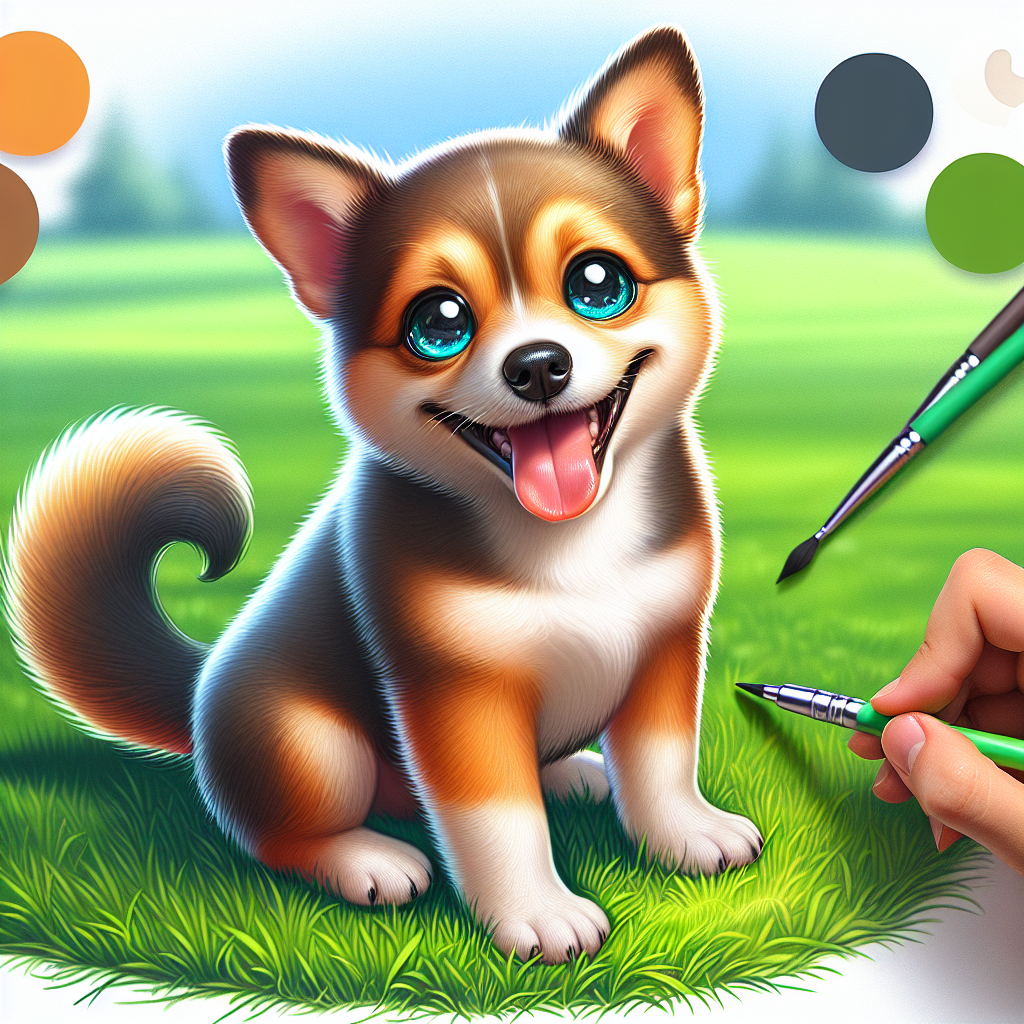The Flea Fiasco: A Not-So-Tiny Problem

Ah, fleas. These tiny, bloodsucking hitchhikers have a knack for turning peaceful homes into battlegrounds. Ever had a flea infestation? If you have, you know it’s not just an itch—it’s a full-scale invasion. These little pests multiply faster than you can say “flea circus.” They’re not just a nuisance; they can wreak havoc on your pets and sanity. Honestly, nothing sends shivers down a pet owner’s spine quite like the words “flea infestation.”
Back in my early days in the pet game, I remember the moment I realized these critters had moved in. I was lounging on the couch, blissfully unaware, when my dog started scratching like there was no tomorrow. It hit me—fleas had taken over. Flea infestation signs were all around, but I just hadn’t noticed. It felt like a bad dream, but it was real life—and it was time to act.
Spotting the Unseen: Are Fleas Invading Your Home?
You’d think spotting fleas would be easy, but no, these pests are sneaky. They hide in plain sight, making it hard to detect fleas at home. You’ll see the aftermath—pets scratching like they’re auditioning for a flea shampoo commercial. But the culprits? They’re like ghosts. Fleas like to hide in carpets, upholstery, and even your pet’s bed. They prefer places where they can make a quick getaway.
One good tip? Keep an eye out for flea dirt—tiny black specks that look like pepper. It’s flea poop, and it’s a dead giveaway. If you’re seeing this stuff, you’ve got a problem. Trust me, if you’re finding flea dirt, you’re not just playing hide and seek with fleas—you’ve already lost.
Another trick is the white sock test. Put on a pair of white socks and shuffle around your pet’s favorite hangouts. If fleas are present, you’ll probably spot them hopping onto your socks for a ride. It’s like being a flea taxi, but at least you’ll know they’re there.
Battle Plan: Tackling Fleas Head-On
So, you’ve confirmed your unwanted guests. Now what? Time for action. First, tackle your pets. There are plenty of pet-safe flea treatments out there. I’m not talking about anything fancy—just the basics. You want something that kills fleas without putting your pet at risk.
Next, you’ve got to think about flea removal strategies for your home. Start with daily vacuuming for fleas. It sounds simple, but it’s effective. Vacuums suck up fleas, eggs, and larvae, reducing their numbers. Don’t skip this step—it’s crucial. And remember to empty the contents outside, or you’ll just be playing pass the parcel with fleas.
You might also need to wash your pet’s bedding in hot water. Heat kills fleas, and a good wash will make their lives a lot harder. Don’t just stop at the pet stuff—your own bedding could be a flea motel too. It’s a bit of work, but it pays off.
Clean Sweep: Evicting Fleas from Your Home
Cleaning—it’s not glamorous, but it’s your best weapon. Best cleaning methods for fleas include thorough cleaning of carpets and upholstery. Steam cleaning is a good choice if you can swing it. The heat will fry those fleas like eggs on a hot sidewalk.
And don’t forget the nooks and crannies. Fleas love dark, hidden spots, so get in there with your vacuum. Behind furniture, under cushions, those forgotten corners—they’re all fair game. This is warfare, and you’ve got to be thorough.
You might even consider flea bombs or sprays, but use them with caution. They can be effective, but also harsh—especially if you have pets or kids. Follow instructions like your life depends on it, because it just might.
Pet Patrol: Keeping Your Furry Friends Flea-Free
Once you’ve cleared the house, your job isn’t over. Fleas are persistent little buggers, and they’ll try to come back. Flea prevention for pets is key to keeping your home flea-free. Regularly check your pets for fleas—especially if they love exploring outdoors.
Consider using pet-safe flea treatments regularly. There are plenty of options—collars, topical treatments, oral meds. Just find what works for you and your pet. I remember trying a bunch of different products before finding the right fit for my old Labrador. It was trial and error, but it was worth it.
And don’t forget to keep up the daily vacuuming. It might seem like overkill, but it’s your best defense. Think of it as your daily workout—except instead of burning calories, you’re evicting fleas.
So there you have it—a battle plan to rid your home of these pesky invaders. It’s not glamorous, but it’s necessary. Think of it as your own little war story. And when it’s all over, and your home is finally flea-free, you’ll appreciate the peace and quiet. Thanks for sticking with me through this wild ride. Good luck out there, and may your home stay flea-free!
Natural Remedies to Tackle Fleas
Alright, let’s dive into the world of natural flea remedies for pets. I know what you’re thinking—fleas are like that unwanted guest that just won’t leave. But hold your horses, there are ways to deal with them without turning your house into a chemical plant. You might’ve heard about diatomaceous earth. It’s this powdery stuff that can dry out those little pests. Sprinkle it around and let it sit like you’re marinating a steak. Just be cautious with pets around—no one wants a coughing furball.
And then there’s the old-school favorite—lemon. Yeah, you heard me right. Fleas don’t like the smell of citrus. You can make a lemon spray by boiling slices in water and letting it steep overnight. Spray it on your pet’s fur, but don’t soak them like you’re turning them into a lemonade stand. Fleas can’t stand the stuff. And if you’re into essential oils, lavender and cedarwood are your friends. Mix a few drops with water and give your home a spritz. It’s like a spa day for your living room, just without the relaxing music.
Chemical Solutions and When to Use Them
Now, sometimes natural remedies are like bringing a spoon to a knife fight. When the infestation is out of hand, you might need to consider chemical flea treatment safety. You know, the big guns. But don’t dive in headfirst—safety first, folks. Flea collars, topical treatments, or oral medications can be effective, but you’ve got to read the labels like you’re studying for finals. Some of these treatments need vet approval. You don’t want to play doctor without a license.
And here’s a tip—timing is everything. Follow the instructions to the letter. Don’t double dip or mix treatments like you’re creating a flea cocktail. You need to be cautious with your pets, ensuring their safety is paramount. It’s not just about killing fleas; it’s about doing it without collateral damage. If your pet starts acting weird, call the vet. It’s better to be safe than sorry.
The Role of Regular Pet Grooming
Now onto something that’s as old as time—pet grooming for flea prevention. I know, I know, grooming can feel like a chore. But trust me, it’s like a regular check-up with your doctor. A good scrub keeps your pet looking sharp and keeps those fleas guessing. Regular baths with flea shampoo can help. Don’t go overboard though—you’re washing a pet, not a car.
And let’s not forget brushing. Regular brushing helps spot fleas early. You might catch a flea or two and send them packing before they invite their friends over for a party. Plus, your pet will love the attention. It’s a win-win. And if your pet freaks out at the sight of a bath, try to make it fun. Throw in a toy or two. They’ll be too distracted to notice they’re getting clean.
Household Cleaning Tips to Prevent Fleas
Fleas don’t just live on your pets—they love your home too. Cleaning house to prevent fleas is a must. Vacuuming is your best friend. It’s like erasing evidence of a crime. Carpets, rugs, furniture—leave no stone unturned. And while you’re at it, wash your pet’s bedding regularly. Fleas love a cozy bed as much as anyone.
And here’s a nugget of wisdom—salt and baking soda can be flea’s kryptonite. Sprinkle a mix on your carpets, let it sit for a while, and then vacuum. It’s like a homemade flea-bomb minus the explosions. But remember, consistency is key. This isn’t a one-and-done deal. Fleas are persistent little buggers, so you need to be more stubborn than they are.
Monitoring and Maintenance for Long-term Control
Finally, let’s talk about the long game. Monitoring and maintenance for long-term control is where the magic happens. It’s not just about getting rid of a flea infestation; it’s about keeping it from coming back like a bad sequel. Regular checks on your pet and home are crucial. It’s like keeping a weather eye on the horizon—be ready for anything.
You might want to consider flea traps. They’re not the most glamorous things, but they can give you a heads-up if fleas are making a comeback. And don’t forget about your yard. Fleas love the great outdoors. Keep your lawn trimmed and tidy. Fleas can’t resist tall grass and leaf piles. It’s like a flea theme park, and you’re shutting it down.
And there you have it. Stick to these methods, and you’ll be one step ahead of those pesky fleas. It’s a battle, sure, but with a bit of effort, you can keep your pets flea-free. Thanks for sticking with me through this flea saga. Here’s to a flea-free living—cheers to that!
Handling Fleas on Your Pets
Ah, fleas. They’re like that annoying houseguest who just won’t leave. You’ve got a flea infestation on your hands, and now your pets are scratching like there’s no tomorrow. I’m here to help you get a handle on it. They say the first step to solving a problem is admitting you have one. The second? Treating those poor pets of yours.
First thing’s first—grab a flea comb. It’s cheap, easy to use, and your pet will probably enjoy the massage. Go over their fur with it, trapping those little buggers in the teeth of the comb. Once you’ve done that, you might want to think about a flea treatment. There are plenty out there, from topical solutions to oral medications. It’s best to talk to the vet to see what fits your pet’s needs.
I remember this time when my dog, Max, was scratching up a storm. I went with a topical treatment, and within days, he was back to his usual lazy self. You’ve got options—just be sure to follow the instructions. How to treat fleas on pets? It’s a game of patience and persistence. Keep at it.
Cleaning Your Home Thoroughly
Alright, so you’ve handled your pets. Now comes the Herculean task: cleaning your home. Let’s be real, getting rid of a flea infestation is like trying to find a needle in a haystack. You’ve got to be thorough. It’s not just about vacuuming. You’ve got to vacuum like you’ve never vacuumed before. Floors, carpets, furniture—everything’s fair game.
I once spent an entire weekend cleaning my house from top to bottom. I even moved the couch, and trust me, that thing hadn’t moved in years. It was a workout I didn’t sign up for, but the result was worth it. Those fleas didn’t stand a chance. And hey, the best ways to clean home for fleas? Toss some flea powder into the mix. It’s an extra layer of defense in your cleaning arsenal.
Don’t forget to wash your pet’s bedding, too. Hot water, soap, and lots of it. Those fleas love to hide in warm, cozy spots. Don’t give them the satisfaction.
Preventing Future Flea Infestations
So you’ve cleared your home and pets of fleas. What’s next? Prevention, my friend. You don’t want to go through this nightmare again. Trust me on that one.
Prevention is all about consistency. Keep up with monthly treatments for your pets. Those fleas are sneaky, and the last thing you want is for them to make a comeback. I’ve learned this the hard way. One month I was lax, and wouldn’t you know it, Max was scratching again. Lesson learned.
Keeping your yard clean is another trick. Fleas thrive in overgrown grass and shaded areas. A little lawn care can go a long way. Mow regularly, trim bushes, and maybe throw cedar chips around the perimeter. Preventing fleas in the future takes some extra work, but it’s nothing compared to dealing with an infestation.
Natural Remedies and Their Effectiveness
Now, let’s talk about natural remedies. Some folks swear by them. Others? Not so much. I’m here to give you the lowdown.
Diatomaceous earth is one you might’ve heard of. It’s a fine powder made from fossilized algae. Sprinkle it around your home, and it’ll dehydrate the fleas. Just be careful—this stuff can get messy. Don’t go all out like it’s a powder party.
Then there’s the classic vinegar and water solution. Mix equal parts in a spray bottle and spritz it around. Some say it works wonders. I tried it once, and I think it might’ve helped a bit. But hey, I’m no scientist.
Natural flea remedies effectiveness is hit or miss. They’re not as magical as they sound. But if you’re looking for a more eco-friendly option, it’s worth a shot. Just don’t expect miracles.
When to Call in the Professionals
Sometimes, despite your best efforts, those fleas just won’t quit. That’s when you might need to raise the white flag and call in the big guns.
Professional flea extermination services aren’t cheap, but they know their stuff. If your infestation is out of control, it might be time to call in the cavalry. They’ve got the equipment and the know-how to tackle the problem head-on. I remember a friend of mine who was at her wit’s end with fleas. She called in a pro, and within a day, her home was flea-free.
It’s not an easy decision, but sometimes it’s the best one. You’ve got to weigh the pros and cons. Your sanity might just depend on it.
So there you have it. Handling your pets, cleaning your home, preventing future infestations, giving natural remedies a shot, and knowing when to call in the professionals. A flea-free life is within reach. You got this. Cheers!
Quick Takeaways:
Alright, let’s get straight to it. Fleas. They’re the tiny terrors that can turn your home into a house of horrors. So, how do you get rid of a flea infestation without losing your mind? First things first, know the enemy. Flea infestation signs are your first clue—your pet scratching more than usual, tiny black specks (flea dirt) on their skin, or worse, spotting a flea or two hopping around.
To detect fleas at home, grab a fine-tooth comb, some white paper, and your furry friend. Comb their fur and watch what falls. If little specks turn red when wet, you’ve got fleas. Now, for the battle plan: flea removal strategies. Start with your pets—natural flea remedies for pets can be a gentle first step. But sometimes, you need the big guns—chemical flea treatment safety is key, so follow instructions like a hawk.
Next, the home front. Best cleaning methods for fleas call for a good old-fashioned scrub. Daily vacuuming for fleas is a must; they love to hide in carpets and upholstery. Don’t forget to wash pet bedding in hot water. And hey, flea prevention for pets isn’t just a one-time gig; it’s a lifestyle. Regular pet grooming for flea prevention keeps the little pests from setting up camp.
For long-term flea control methods, consider regular treatments and cleaning house to prevent fleas. It’s not just about getting rid of the little buggers—it’s about keeping them away for good. So, roll up those sleeves and get to work. Your pet—and your sanity—will thank you.
FAQs:
1.
How do you get rid of a flea infestation in your home?
You start by tackling the battlefield on two fronts—your pet and your home. For your pet, use pet-safe flea treatments. These can range from natural flea remedies to chemical solutions. Always read labels for chemical flea treatment safety. Then, shift your focus to cleaning your house. This means daily vacuuming for fleas—those little critters love hiding in the carpet. Wash your pet’s bedding in hot water and make it a routine. Consistency is your best friend here.
2.
What are the flea infestation signs to look out for?
Your first clue might be your pet scratching like it’s going out of style. Flea dirt—tiny black specks that turn red when wet—is another sign. You might also spot fleas themselves. How to detect fleas at home involves a bit of detective work. Grab a flea comb, some white paper, and comb through your pet’s fur. If you see those telltale signs, it’s time to take action.
3.
How effective are natural flea remedies for pets?
Natural remedies can be a gentle start to flea control. Some swear by them, using everything from diatomaceous earth to essential oils. But, they’re not always a magic bullet. Effectiveness varies, and sometimes, they don’t pack the punch needed for a full-blown infestation. Keep an open mind, but have a backup plan.
4.
How do you keep your home flea-free in the long term?
It’s all about maintenance. Regular cleaning house to prevent fleas is crucial. This means sticking to a schedule of vacuuming, washing linens, and keeping your pet’s area tidy. Long-term flea control methods include routine flea treatments for your pet. It’s not a one-and-done deal. Stay vigilant, and those fleas will think twice before crashing your party again.
5.
When should you consider professional flea extermination services?
Sometimes, the situation gets out of hand. If your efforts seem to be going nowhere, it might be time to call in the pros. Professional flea extermination services can tackle severe infestations with the right tools and expertise. It’s an investment, sure, but sometimes, it’s the fastest way to reclaim your space from those pesky invaders.
Conclusion:
So, there you have it. Getting rid of a flea infestation is no small feat, but with a bit of grit and know-how, it’s doable. Remember, it’s not just about getting rid of the fleas today—it’s about keeping them at bay for good. Flea prevention for pets and maintaining a clean home are your best allies. Don’t underestimate the power of daily vacuuming for fleas and regular pet grooming for flea prevention. These small actions add up over time.
And hey, don’t be too hard on yourself. Fleas happen to the best of us. Maybe they’re just looking for a place to crash—though, not on our watch. Thanks for sticking with me through this wild ride. With these tips up your sleeve, you’re ready to show those fleas the door. Here’s to a flea-free life. Keep your chin up, and good luck!
References:
1. [CDC: Flea Infestation Cleaning](https://www.cdc.gov/fleas/section-name/index.html)
2. [EPA: Controlling Fleas and Ticks Around Your Home](https://www.epa.gov/pets/controlling-fleas-and-ticks-around-your-home)
3. [Healthline: How to Get Rid of Fleas](https://www.healthline.com/health/healthy-home-guide/how-to-get-rid-of-fleas)
4. [WebMD: Remove Fleas from Pet](https://www.webmd.com/pets/remove-fleas-from-pet)
5. [RSPCA: Advice on Fleas](https://www.rspca.org.uk/adviceandwelfare/pets/general/fleas)
Our solution eradicates fleas on contact without harmful chemicals, ensuring a safe environment for your pets and family. Easy to use and highly effective, SayByeBugs helps you maintain a flea-free home. Learn more and order today at SayByeBugs.com
Our solution eradicates fleas on contact without harmful chemicals, ensuring a safe environment for your pets and family. Easy to use and highly effective, SayByeBugs helps you maintain a flea-free home. Learn more and order today at SayByeBugs.com













